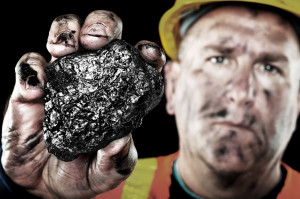Corbett and PA coal industry wary of new EPA rules on CO2

By Andrew Staub | PA Independent
HARRISBURG, Pa. — After President Obama on Monday unveiled new EPA regulations that would reduce carbon dioxide emissions by 30 percent by 2030, Republican Gov. Tom Corbett released his own statement about reductions.
He wasn’t talking about the pollutants blamed for global warming, but rather employment.
“While we continue to review the EPA’s proposed rulemaking in detail, I am concerned that these new mandates will eventually shut down hundreds of coal-fired power plants across the country and destroy thousands of family-sustaining jobs,” Corbett said in a statement. “Those reports, if true, are unacceptable.”
While environmental activists across the country celebrated the new rules, which the EPA said will be worth an estimated $55 billion to $93 billion in health and climate benefits in 2030, business and industry leaders in Pennsylvania looked at it with a wary eye, worried about spiking electric bills, strain on the power grid and adverse economic impacts.
John Pippy, CEO of the Pennsylvania Coal Alliance, said the regulations could eliminate coal from the state’s energy portfolio. That would cost thousands of jobs, he said.
“I think there’s a different path — not one that’s so aggressive that it literally puts our economy at risk,” Pippy said.
COAL SHOULDER: Pennsylvania’s coal industry believes new EPA emissions regulations could remove coal from the state’s energy portfolio.
Corbett said almost 63,000 people work in jobs supported by the coal industry in Pennsylvania. The state, the fourth-leading producer of coal in the United States and home to 8,100 miners, receives about 40 percent of its power from coal-fired power plants.
“Anything that seeks to or has the effect of shutting down coal-fired power plants is an assault on Pennsylvania jobs, consumers and those citizens who rely upon affordable, abundant domestic energy,” Corbett said.
Tom Wolf, the Democratic nominee for governor, includes climate change in his campaign platform, indicating he wants to set emission caps, require the state to meet green building standards and push investments in energy efficient retrofits. Yet his campaign was silent on the new EPA rule, as a spokesman didn’t return a message seeking comment.
Despite the industry warnings issued in the announcement’s wake, others aren’t so fearful of the new regulations.
Christina Simeone, director of the PennFuture Energy Center for Enterprise and the Environment, sees an opportunity to harness cleaner energy. She called the rule “an incredible step forward for our nation.”
Simeone also doesn’t buy the argument the rule could be the lone driver of power plant closures, adding that the coal industry is also being challenged by natural gas, a cleaner and cheaper fuel.
“Yes, they have to comply with health-cased environmental regulations, but this rule is not shutting down coal plants,” she said. “It goes far, far beyond this rule.”
State Rep. Greg Vitali, the Democratic chairman of the House Environmental Resources and Energy Committee, also brushed aside the governor’s concerns about job loss while embracing the emissions rule.
“I have heard this concern again and again over the years, and the reality has not borne that out,” he said.
Air quality has been problematic in several Pennsylvania counties. Twenty received failing grades in the American Lung Association’s 2014 State of the Air Report.
But Gene Barr, president and CEO of the Pennsylvania Chamber of Business and Industry, said even Obama acknowledges improvements won’t come cheaply.
The U.S. Chamber of Commerce’s Institute for 21st Century Energy said regulations could cost the United States’ economy $50 billion a year between now and 2030. The rules could also prompt more expensive electric bills, siphon away disposable income and cost 224,000 jobs each year, the institute found, while reducing overall emissions by just 1.8 percent.
After a public comment period, the EPA plans to finalize the standards next June. States will have until June 2016 to submit their plans, which could include retro-fitting coal plants and trying to persuade consumers to be more energy efficient.
Anticipating the rule change, the Pennsylvania Department of Environmental Protection in April submitted a white paper to the EPA with a recommended framework for implementing the regulations. It urged the federal government to implement a flexible emissions reduction program and to work closely with states in developing it.
The DEP also wrote that states should be allowed to exclude “certain electric generators that have environmental benefits that are beyond the CO2 emissions from those sources,” such as coal refuse and coal bed methane.
The Clean Air Council has taken issue with that request, and Monday urged the federal government to reject Pennsylvania’s recommended framework.
Simeone views the regulations as part of a “market correction for decades and decades of coal pollution and fossil fuel pollution,” while Vitali hopes it sparks more conversation about renewable energy.
Those like Barr hope there’s still a place for Pennsylvania’s coal industry as the federal government clamps down on CO2 emissions.
“It’s a strong piece of our heritage,” Barr said. “It can be a strong part of our future.”
Staub can be reached at Andrew@PAIndependent.com. Follow @PAIndependent on Twitter for more.







